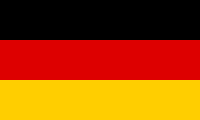Roan (the KIT Gene)
The Roan genotype is a fascinating genetic mutation in horses that causes their coat to display a unique and beautiful pattern. Horses with the Roan genotype have a mixture of white and colored hairs in their coat. There are two different types of Roan. This article focuses solely on Roan Zygosity.
The Roan gene, also known as the color-changing gene, is named as such because affected animals change their coat color several times a year. In Germany, it is also commonly referred to as „Dauerschimmel“ (permanent gray). The gene is present in foals but only becomes visible after the first coat change when the foal coat is shed.
Genetic Code
The genetic code for Roan is as follows:
- N/N = no Roan pattern present
- N/Rn = heterozygous Roan present
- Rn/Rn = homozygous Roan present
N/N Genotype: Horses with the N/N genotype do not have the classic Roan pattern and cannot pass this Roan variant to their offspring.
N/Rn Genotype: Horses with the N/Rn genotype have the classic Roan pattern. They have a 50% chance of passing this Roan variant to their offspring. Crossings with an N/N genotype have a 50% chance of producing a Roan foal.
Rn/Rn Genotype: Horses with the Rn/Rn genotype have the classic Roan pattern. They will pass this Roan variant to all their offspring. Crossings with any genotype will exclusively produce Roan offspring.
Historical Fears and New Insights
For many decades, breeders feared the Roan gene, believing it to be lethal when homozygous. However, a few years ago, it was discovered that this was false, and now there are several homozygous Roans.
Classic Roan vs. Roaning in Pintos
Classic Roan, also known as Roan Zygosity, has nothing to do with the „roaning“ often found in Tobianos and other pintos.
Inheritance of the Roan Gene
Roan is a dominant gene, meaning it only needs one parent to be passed to the foal with a 50% probability. It cannot skip a generation. When two heterozygous Roans are crossed, there is a 75% chance of a Roan foal and a 25% chance of a non-Roan foal. There is also a 25% chance of a homozygous Roan foal. Visually, homozygous Roans are indistinguishable from heterozygous Roans.
Breeds with Roan Coloring
Roan appears in many different breeds, including Quarter Horses, Paint Horses, Welsh Ponies, Shetland Ponies, and many gaited horse breeds like Rocky Mountain Horses. The Belgian Draft Horse is also known for this coloring. It was suspected that Purebred Arabians carry the gene, but this is not the case, although some Thoroughbreds are known to carry Roan.
Relation to the Tobiano Gene
The Roan gene is located on the same allele as the Tobiano gene. A horse that is heterozygous Tobiano can also be heterozygous Roan. However, it cannot be homozygous Tobiano and additionally Roan, or vice versa, homozygous Roan and additionally Tobiano.
Common Base Colors of Roan
The most common base colors of Roan are bay, black, and chestnut. They have their own names in combination with Roan:
- Bay + Roan = Bay Roan
- Chestnut + Roan = Red Roan / Strawberry Roan
- Black + Roan = Black Roan / Blue Roan / Mohrenkopfschimmel
However, all colors are possible in combination with Roan, such as Palomino Roan, Smoky Cream Roan, Black Frame Overo Roan, etc.
Color Changes and Corn Spots
A Roan will never completely gray out unless it also has a Gray gene in addition to the Roan gene. After injuries, the hairs do not grow back white but in the horse’s base color, which is referred to as corn spots. For example, a Blue Roan will have black corn spots in its coat. The color of the Roan changes throughout the year, but the corn spots always remain the same.


The V-shape is also found on the hind legs. In this case, the original color does not start at the hooves due to the socks this pony has. Although it is somewhat difficult to see here, roaning hairs are present at the base of the tail. The tail and mane also have roaning hairs, though not as many as on the body.
The V-shape is also found on the hind legs. In this case, the original color does not start at the hooves due to the socks this pony has. Although it is somewhat difficult to see here, roaning hairs are present at the base of the tail. The tail and mane also have roaning hairs, though not as many as on the body.

Here you can see the small dark corn spots on the body, which occur due to injuries. The hair in these areas grows back only in the original color, which for this pony is black.


Only a few Roans have their entire head in their original color. Usually, the roaning starts between the jowl and the throat.
Only a few Roans have their entire head in their original color. Usually, the roaning starts between the jowl and the throat.

Here you can see the spring coat in white, which is already slowly being replaced by the darker summer coat.


Nearly completely white in spring except for the „points.“
Nearly completely white in spring except for the „points.“

In addition to the white coat in spring, you can clearly see the two-tone color of the tail here. Especially at the base of the tail, there are many white hairs, which decrease in number along the length.


